
In mid June Lake District-based runner Steve Birkinshaw will attempt a continuous round of all the Wainwrights. In his sights, Joss Naylor's record of 7 days 1 hour, a time that's remained unbeaten since it was set back in 1986.
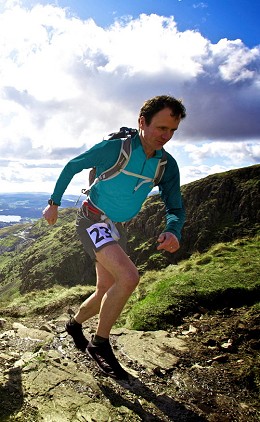
The 214 Lakeland fells in Wainwrights famous Pictorial Guides are a common target for peak baggers, though most will do them over years of fellwalking rather than packed into a single week. Steve has a schedule of 6 days 14 hours for the route, which covers roughly 520km and 36,000m ascent/descent.
As the winner of the 2012 Dragon's Back race (200 miles along the spine of Wales), seven times elite winner of KIMM/OMM, holder of the sixth fastest Bob Graham round (17:09) and winner of Lakeland 100 and Lake District Mountain Trial races, 46 year old Steve Birkinshaw, a hydrologist at Newcastle University, must be in with a good chance of success.
We found out how he's planning to pull it off.
UKH: What has motivated you to give this a go?
Steve: As I live in the Lake District it is natural to want to climb all the fells and there are still a few I have not been up. To do them all in one continuous round just seemed like a great challenge and the fact that there is an existing record held by the legendary Joss Naylor makes it even better.
I am also raising money for two MS charities, the MS Society and the Samson Centre, as my younger sister Hilary has MS. The fact that anyone who has climbed a Wainwright can understand the size of the challenge means I am hoping to get a lot of publicity and raise lots of money.
So, the Dragon's Back. How was that?
I really enjoyed it, it was a great route over almost all the highest pointy bits down the whole length of Wales. It was a hard race, five tough days. It was really hard getting up feeling shattered with the prospect of 35 miles over tough terrain. But after an hour I always picked up a bit. The fifth day was painful as I had some tendonitis at the front of my ankle but it was just a matter of carrying on and getting to the end.
How do you think that compares with running the Wainwrights?
The total distance on the Wainwrights is nearly twice as far. Overall the terrain is probably similar with a mixture of rock, grass, trails etc. The Dragons Back had a bit more road.
For the Wainwrights I am planning on doing further each day (50 miles as opposed to 35 miles) with 5500m of ascent a day compared to 3000m ascent on the Dragons Back. So each day will be a lot tougher and it will be seven days instead of five so again that makes it harder. However, I am planning on a much slower pace on the Wainwrights. For the Dragon's Back I was doing 8 hour days; for the Wainwrights I am planning on up to 20 hour days.
The fact that Joss Naylor’s record has stood so long – is that spurring you on, or intimidating?
It spurs me on, it is not just a matter of turning up and doing it and getting a record. I feel I can get close to the record but everything needs to be right. I have big moments of self-doubt but it pushes me to train harder and be more organised.
What factors will have to come together (in the weather, and in yourself) for you to be successful?
Although I would like to break the record, it is important to get the expectations right. So 'success' will be to finish all the Wainwrights as fast as I can having enjoyed around seven long days on the fells with my running friends. If I stay injury free, I am eating and drinking well and the weather is kind I stand a reasonable chance of breaking the record.
As a local I take it you already know most of the ground. Is having the route totally wired in your head going to be key?
When I decided to do this I knew about 90% of the route. There are some Wainwrights I have never been up and will not until the round but they are on the open fell with easy navigation. I have spent most time on the lower fells (such as Holme Fell and Black Fell) where there are fields and forest and the best routes are tricky to find. Being able to visualise the route certainly makes a lot of difference. I will always know what is coming up and I am confident I will be able to find the correct route in the dark and in bad weather.
Have you been doing any particular training for this?
As Joss Naylor said when I talked to him about this, you cannot really train for it specifically. It is the background of 20 plus years of running in the fells that is the key to it. I have had a good winters training so I am generally feeling fit. I go out running on the fells six days a week with long (two or three hour) runs at the weekend. I also doing a longer eight hour day every month of so.
Are there any clever tactics that might help give you the edge? What sort of support will you be getting for instance?
I have spent a long time looking at a map working out the best route and I reckon I have found a better one. It seems to be around 20km shorter with 2000m less to climb. The other thing I am planning on doing is stopping less at the end of each day. My tactic is to be either moving or sleeping. At road crossings I will have a campervan, so the plan is to eat a meal, go to sleep, have breakfast and get going again. It sounds easy but it relies on great support. As well as road support I will probably have a couple of people with me on the fells at any one time, carrying all my kit and passing me food and drink. It is amazing how helpful and generous everyone is in giving their time up to help me with this challenge.
Steve will set out 14 June, whatever the weather. He is raising money for the MS Society and the Samson Centre
He is sponsored by Berghaus
For more see Steve's Wainwrights Run 2014 blog

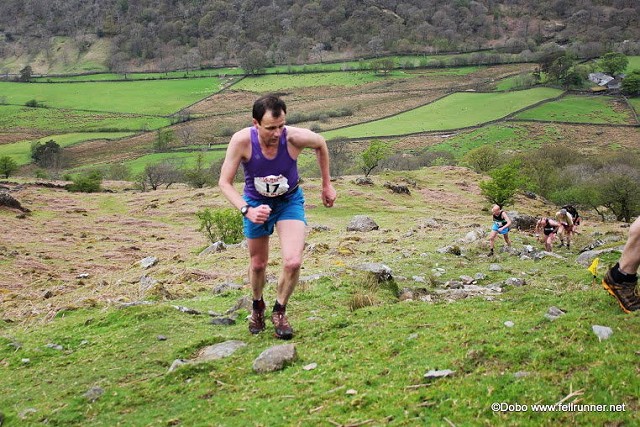





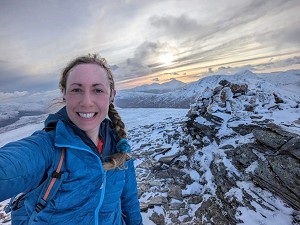
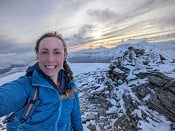

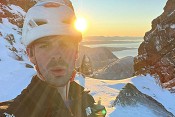
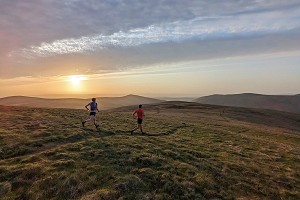

Comments